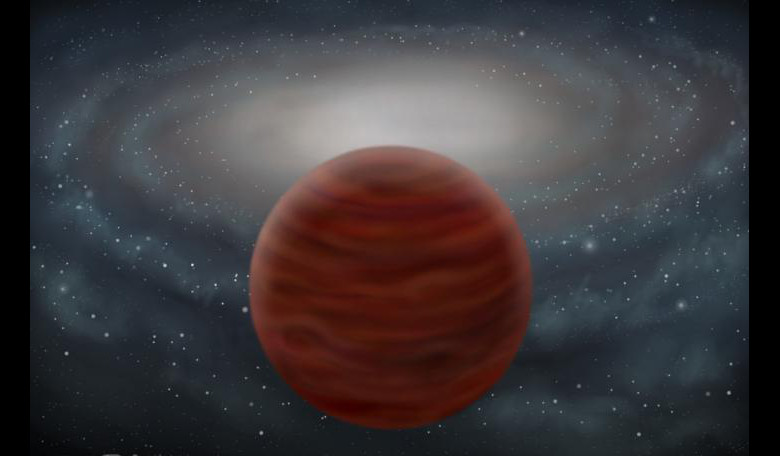A record breaking brown dwarf with a mass equivalent to 90 times that of Jupiter has been found by an international team of astronomers, making it the most massive object of this type found to date.
The object, known as SDSS J0104+1535, was spotted on the fringes of our Galaxy in a region known as the halo, which is made up of the most ancient stars. Estimated to have formed about 10 billion years ago, SDSS J0104+1535 is also made of gas that consists of more than 99.99% hydrogen and helium.
Brown dwarfs are objects which are too large to be called planets and too small to be stars, as their small mass prevents nuclear fusion reactions from taking place. It was not previously known if brown dwarfs could form from such primordial gas, and the discovery is tantalising as it points the way to what could be a larger undiscovered population of extremely ‘pure’ brown dwarfs from our Galaxy's ancient past.
“We really didn't expect to see brown dwarfs that are this pure. Having found one though often suggests a much larger hitherto undiscovered population - I'd be very surprised if there aren't many more similar objects out there waiting to be found,” said Dr ZengHua Zhang of the Institute of Astrophysics in the Canary Islands and lead author of the research paper submitted in Monthly Notices of the Royal Astronomical Society.
Located 750 light years away in the constellation of Pisces, SDSS J0104+1535 was spotted using the European Southern Observatory's Very Large Telescope (VLT) and has been classified as an L type ultra-subdwarf according to a scheme very recently established by Dr Zhang.
The new discovery adds one more to a small collection of other known L subdwarfs that have previously been detected, and all six are collectively placed within a ‘halo brown dwarf transition zone’ - a term used to describe a ‘substellar subdwarf gap’ for mid L to early T types. However SDSS J0104+1535 is the ‘purest’ of them all meaning it contains a much lower metal content (in astronomy anything heavier than hydrogen or helium is considered a metal).
If such an undiscovered population does exist, and objects that are even more metal poor and cooler than SDSS J0104+15 are to be found, then large scale near-infrared (NIR) surveys, such as the Visible and Infrared Survey Telescope for Astronomy (VISTA) and ESA’s Euclid mission will hopefully find them in the near future.











